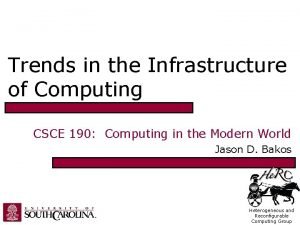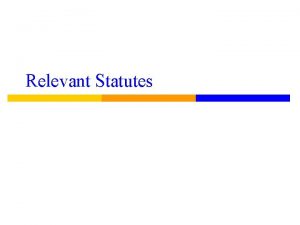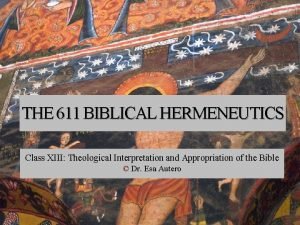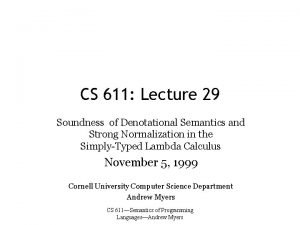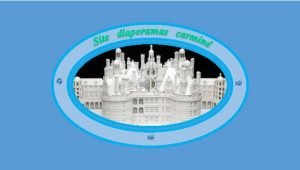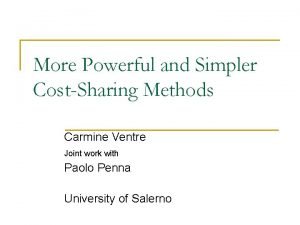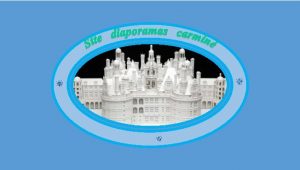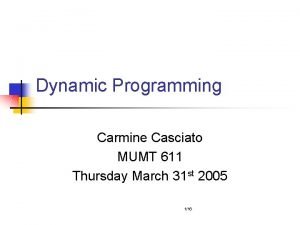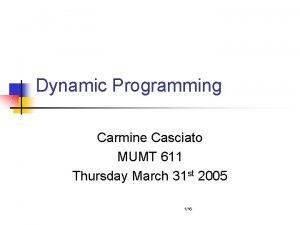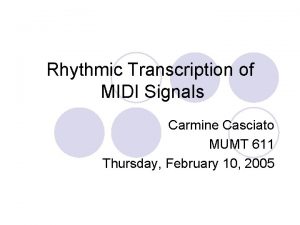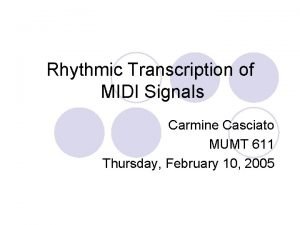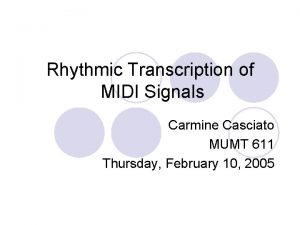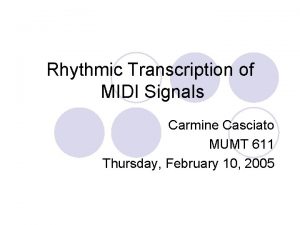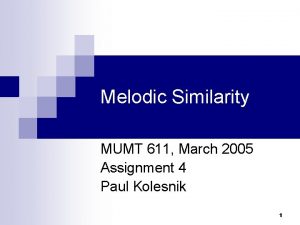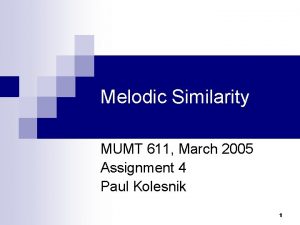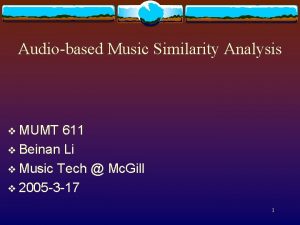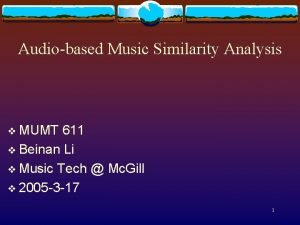Rhythmic Similarity Carmine Casciato MUMT 611 Thursday March












- Slides: 12

Rhythmic Similarity Carmine Casciato MUMT 611 Thursday, March 13, 2005

Overview § Music Tech research into rhythmic similarity § Representations § Problem of segmentation

Usage

Usage § Computer accompaniment systems § Ethno-musicological research § Database management § Queries by humming § Genre classification § Speech processing

Paulus and Klapuri (2002) § Detects rhythmic similarity between musical samples containing arbitrary drum/percussive sounds § Removes sinusoidal components from sound to detect noisy percussive sounds, from this produces beat and measure estimations § Extracts loudness and brightness (mean square energy and spectral centroid, respectively) per measure § Dynamic Time Warping (DTW) finds optimal path between feature vectors § No training of system required

Foote, Cooper, and Nam (2002) § Derivation of ‘beat spectrum’ § Feature used is power of FFT bins embedded into similarity matrix § Euclidean distance is used as similarity metric, tested against cosine angles between feature vectors, and FFT coefficients

Ellis and Arroyo (2004) § Principal Component Analysis, a dimension reduction tool § Requires robust segmentation § Poor classification results

Eigen. Rhythms (Ellis and Arroyo 2004) § Useful for generating variations?

Toussaint (2002) § Geometric representations of rhythms § Require extensive segmentation § Tests various distance metrics § Minimum Spanning Trees offer a framework for rhythmic development analysis

Toussaint Representations (2002)

Music Technology References § Ellis, D. , and J. Arroyo. 2004. Eigenrhythms: Drum pattern basis sets for classification and generation. In Proceedings of the International Conference on Music Information Retrieval. § Foote, J. , M. Cooper, and U. Nam. 2002. Audio retrieval by rhythmic similarity. In Proceedings of the International Conference on Music Information Retrieval. § Paulus, J. , and A. Klapuri. 2002. Measuring the similarity of rhythmic patterns. In Proceedings of the International Conference on Music Information Retrieval. § Toussaint, G. 2002. A mathematical analysis of African, Brazilian, and Cuban clave rhythms. In Proceedings of BRIDGES: Mathematical Connections in Art, Music, and Science.

Other Disciplines § Gabrielsson, A. 1973. Similarity ratings and dimension analyses of auditory rhythm patterns. Scandinavian Journal of Psychology 14: 138 60. § Lerdahl F. , and R. Jackendoff. 1983. A generative theory of tonal music. Cambridge: The MIT Press. § Powel, D. , and P. Essens. 1985. Perception of temporal patterns. Music Perception 2(4): 411 40.

